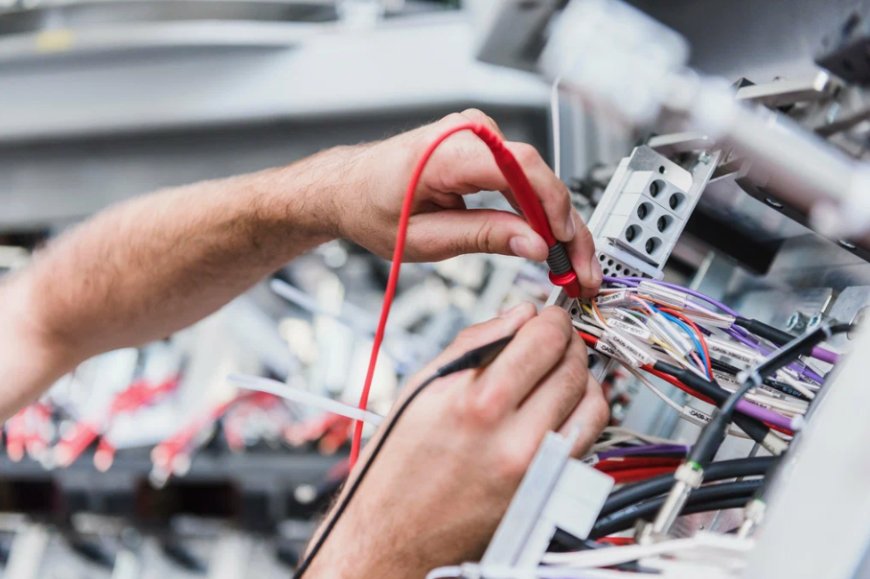Commercial Electric Remodel Explained: Benefits, Costs & Planning Tips
Get a clear overview of commercial electric remodel projects. Understand the benefits, budgeting tips, and key steps to ensure a smooth upgrade process.

In todays fast-paced business world, having a safe and efficient electrical system is essential. Whether youre running a retail store, a restaurant, or an office, electricity powers your daily operations. If your building is older or your business is expanding, it might be time for a commercial electric remodel. This process ensures your electrical system can meet modern demands, comply with safety codes, and support your future growth.
Lets explore what a commercial electric remodel involves, why it matters, and how to approach it the right waywithout the stress.
What Is a Commercial Electric Remodel?
A commercial electric remodel is a complete or partial upgrade of the electrical infrastructure in a commercial space. Unlike minor repairs, this process includes replacing outdated wiring, upgrading breaker panels, improving lighting, and adding outlets or energy-efficient systems.
Remodeling your electrical setup isnt just about aesthetics or performanceits about safety, sustainability, and ensuring your building can handle the technology and equipment your business relies on.
When Do You Need a Commercial Electric Remodel?
Recognizing when to upgrade is key. Here are some common signs:
-
Flickering Lights or Power Fluctuations: These can be signs of old wiring or overloaded circuits.
-
Limited Outlets: Too many extension cords or power strips mean your system isn't keeping up.
-
New Equipment or Systems: Upgraded machinery, computers, or HVAC systems often need more power.
-
Code Violations: Older buildings may not meet updated electrical codes, which can pose legal or safety risks.
If you notice any of these signs, it might be time to consider a commercial electric remodel.
Benefits of a Commercial Electric Remodel
Upgrading your business's electrical system provides a range of benefits:
-
Enhanced Safety: Reduces fire hazards, short circuits, and power failures.
-
Improved Efficiency: Modern systems use energy more wisely, lowering your electricity bill.
-
Room to Grow: Prepares your building to handle future expansions and new technology.
-
Increased Property Value: A modern electrical system can boost the value of your commercial property.
-
Better Lighting and Comfort: Good lighting helps productivity and creates a welcoming environment for clients and employees.
These benefits show that a remodel isnt just a costits an investment in your businesss future.
Planning Your Commercial Electric Remodel
Before jumping into the work, its important to plan the process carefully. Heres how:
1. Assess Your Needs
Understand what you need from your electrical system. Are you adding new workstations, installing new lighting, or upgrading HVAC systems? Identifying your goals helps guide the project.
2. Hire a Qualified Electrician
Always work with a licensed and experienced commercial electrician. They understand local codes and safety standards, and can design a system tailored to your business.
3. Create a Timeline
Set a clear timeline that minimizes disruptions. Some work can be scheduled after hours or on weekends to avoid downtime.
4. Get Permits and Inspections
Make sure your electrician handles all necessary permits. Inspections are required to ensure everything is up to code and safe to operate.
5. Plan for the Future
Think long-term. Its smart to include extra capacity for future upgrades or expansion in your commercial electric remodel plan.
Common Mistakes to Avoid
To get the most from your remodel, steer clear of these common mistakes:
-
DIY Electrical Work: Commercial electrical systems are complex. Only professionals should handle them.
-
Ignoring Code Requirements: Skipping permits or inspections can lead to fines or dangerous results.
-
Cutting Corners on Materials: Cheap components often fail faster, costing more in the long run.
-
Not Considering Future Needs: Todays system might not handle tomorrows technology. Plan for growth.
Avoiding these errors will help your commercial electric remodel go smoothly and deliver long-term value.
Cost Factors to Consider
The cost of a remodel can vary widely depending on several factors:
-
Size of the Space: Larger buildings require more materials and labor.
-
Age of the Building: Older structures often need more extensive upgrades.
-
Scope of the Remodel: Adding panels, lighting, outlets, and safety features adds to the cost.
-
Location: Prices may vary based on regional labor and material rates.
While the average project can cost anywhere from a few thousand dollars to tens of thousands, the return in safety and efficiency makes it worth it.
FAQs
Q1: Will I need to shut down my business during the remodel?
A: Not always. A skilled electrician can plan the work in phases or during off-hours to keep disruptions minimal.
Q2: Can I upgrade just part of my electrical system?
A: Yes. If the entire system doesnt need remodeling, you can focus on areas with the most need, like lighting or specific equipment zones.
Q3: How often should a commercial buildings electrical system be updated?
A: Typically every 2030 years, or sooner if your power usage increases or safety concerns arise.
Q4: How long does a commercial remodel take?
A: Small projects can take a few days, while larger remodels might take weeks. Timelines depend on building size and scope of work.
Q5: Is a commercial electric remodel tax deductible?
A: In many cases, yesespecially if the upgrades improve energy efficiency or qualify as capital improvements. Consult a tax professional.
Conclusion
A commercial electric remodel is more than a technical upgradeits a smart, forward-thinking decision that supports your businesss safety, efficiency, and growth. From avoiding outdated systems to planning for future expansion, investing in a modern electrical infrastructure pays off in many ways.






































